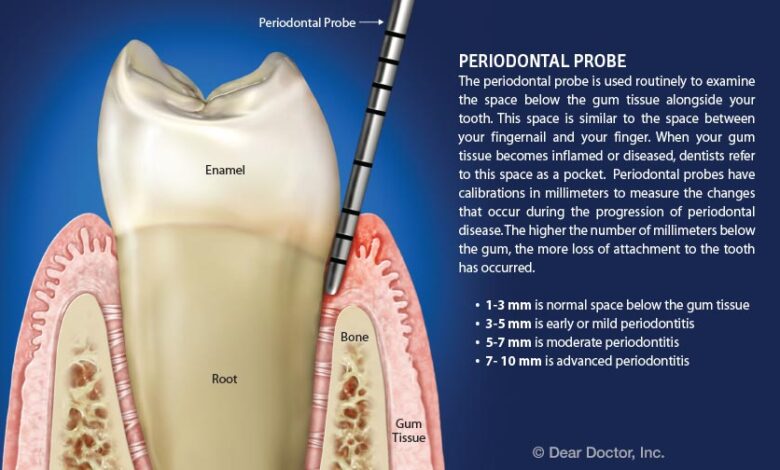Understanding Periodontal Disease and How a Dentist Can Help

Periodontal disease or gum disease infects gums and can spread to the bone supporting your teeth if left untreated. If you experience symptoms such as swollen gums, persistent bad breath, and sensitive teeth, visit a dentist for treatment. Here is more information about periodontal disease and treatment options:
Periodontal Disease Stages
Gum disease emanates from failing to brush or floss teeth regularly, leading to plaque accumulation. This plaque contains various kinds of bacteria that can infect your gums and teeth, causing irritations. Some medical conditions, such as diabetes weaken the immune system and compromise oral health, exposing individuals to gum disease. Periodontal disease affects teeth and gums in the following stages:
Gingivitis
Gingivitis is an early stage of gum disease and it begins with red and swollen gums. During this phase, your gums are tender and may bleed when you eat hard foods or brush your teeth. Gingivitis also comes with typical symptoms, such as bad breath even after flossing, brushing, and cleaning your tongue. When bacteria and plaque accumulate along the gum line, they create foul odors. Sometimes, gums appear shiny due to the inflammation and increased fluid content in the gum tissue. When you have this gum issue, you might experience mild pain when chewing.
Periodontitis
If gingivitis isn’t treated and managed, it advances to periodontitis which affects the supporting bones. At this phase, bacteria get beneath the gum line and create a space between gums and teeth. As this ailment progresses, the gums may recede or shrink away from the teeth, exposing more of the tooth roots. At this point, some people might experience a pus infection in the gum line, while others start developing intense pain. Chronic periodontitis destroys the supporting bone and tissues, contributing to weak and loose teeth.
Treatment Options
A dentist diagnoses and treats periodontal disease before it worsens and affects overall health. This professional will examine your teeth and gums to know the severity and stages of infection. They use dental X-rays to determine how much bone you’ve lost around your teeth for personalized treatment. A dentist can also ask about your symptoms to understand the progression of the gum illness. They also look for plaque buildup.
To reduce gum swelling and control bacteria, your dental specialist can prescribe antibiotics. If you have mild gum disease, an experienced periodontist gets rid of plaque from your teeth using the scaling technique. Another effective method is smoothing out root surfaces to prevent bacteria from reattaching. For advanced periodontitis, the professional might recommend gum grafting to cover exposed tooth roots or flap surgery to reduce gaps. After treatment, your dentist schedules follow-up appointments to monitor your gum health and assess the effectiveness of the treatment.
Book an Appointment With a Dentist
By detecting gingivitis early, you can seek treatment and prevent it from developing into periodontitis. To manage or prevent a gum infection, visit a dental specialist regularly for check-ups and deep cleaning. If you’re experiencing gum disease symptoms, book an appointment with a dentist for treatment.



